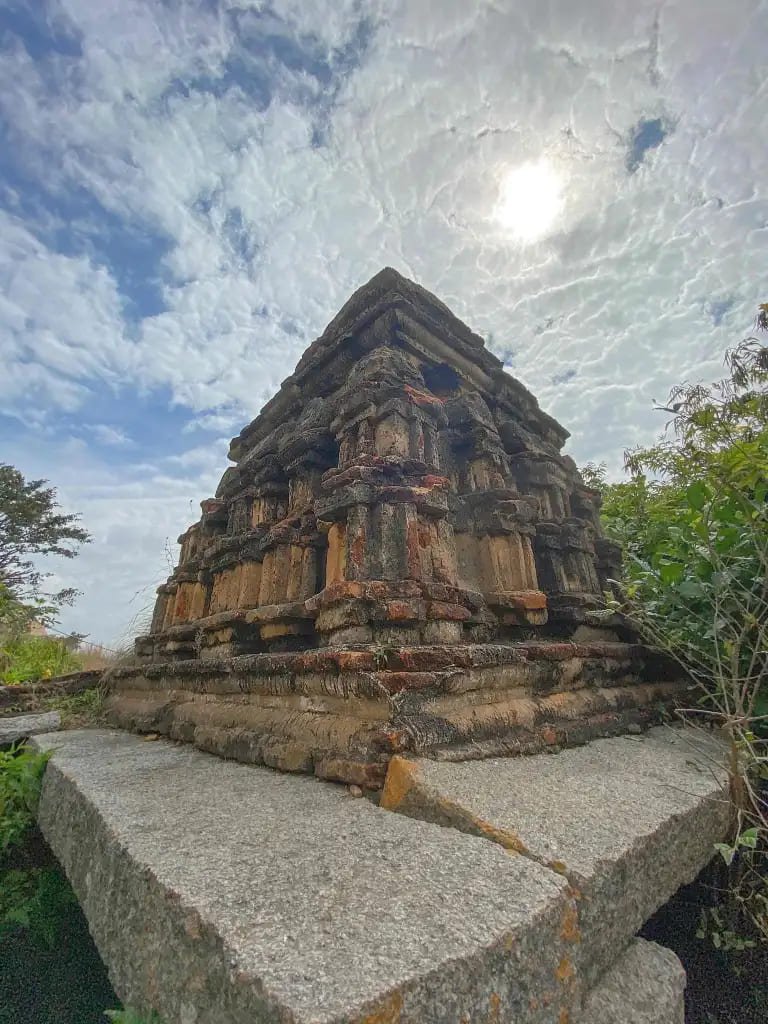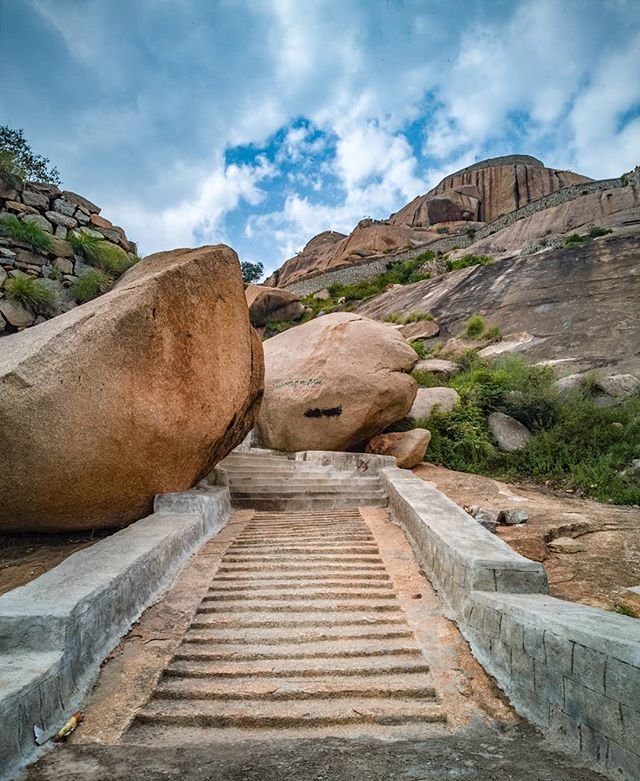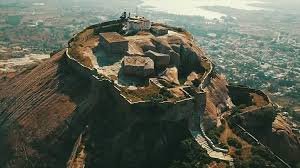
Gudibande Fort: Karnataka's Hidden Gem
Karnataka, a state rich in history and natural beauty, is home to a myriad of fascinating destinations. Among them, Gudibande Fort stands out as a hidden gem, offering a captivating blend of historical intrigue and stunning views. This fort, often overshadowed by its more famous counterparts, promises an enriching experience for history enthusiasts, nature lovers, and adventure seekers alike. Nestled in the Chikkaballapur District of Karnataka, Gudibande is a hidden gem waiting to be explored. This quaint town, situated at an elevation of 826 meters (2709 feet), offers a blend of historical intrigue, architectural marvels, and natural beauty, making it an ideal destination for history enthusiasts, trekkers, and spiritual seekers alike.
A Glimpse into Gudibande’s Rich History
Gudibande Fort, located in the Chikkaballapur district of Karnataka, is a lesser-known but historically significant site. The fort's origins trace back to the 16th century, during the reign of the Vijayanagara Empire. It was constructed by the local chieftain, Yelahanka Nayaka, to serve as a strategic military post. The fort played a role in the regional politics of the time and witnessed numerous battles and sieges, contributing to its storied past.
Architectural Marvel
Gudibande Fort stands as a testament to the town’s storied past. Constructed in the 17th century by a yogi and local chieftain named Byre Gowda, the fort is believed to be a concise replica of the Madhugiri Fort. Byre Gowda, who was associated with the Tuluva dynasty of the Vijayanagar empire, designed this seven-level fort with interconnecting escape routes for soldiers’ safety during emergencies.
At the summit of the fort, you’ll find the ancient Shiva temple, “Sir Rameshwara Temple.” According to legend, this temple was established by Sage Vishwamitra and Lord Rama, and it is considered one of the 108 Jyotirlingas. The temple features a strong pillar with a square base adorned with well-sculpted images.
The fort’s most remarkable feature is its rainwater harvesting system. Byre Gowda ingeniously linked 19 rock ponds and tanks, known as dhones, which could collectively hold nearly 3 lakh liters of rainwater. This unique water channel system ensured a reliable water supply for the fort’s inhabitants.
Location:
Gudibande Fort is situated in the Chikkaballapur district of Karnataka, approximately 100 kilometres north of Bengaluru. The fort is located near the small village of Gudibande, which is accessible by road from major towns and cities in the region.
Discovering Gudibande: Places to Visit
- Lakshmivenkataramanaswamy Temple:
Constructed by the Cholas, this temple is one of the most popular religious sites in Gudibande. It attracts devotees and visitors with its serene ambience and historical significance. - Narasimhaswamy Temple:
This cave temple carved out of a massive rock, is a significant landmark in Gudibande. The town’s name itself is derived from this temple, with “gudi” meaning temple and “banda” meaning rock. - Surasadmagiri Hill
The second-highest hill in the district, Surasadmagiri Hill, is home to thirteen ponds and two temples dedicated to Lord Shiva and Goddess Parvathi. The hill offers stunning panoramic views and is a great spot for trekking and nature walks. - Amani Byrasagara Lake:
Built by Byre Gowda in the 16th century, this lake is a perfect place for a peaceful retreat. The serene waters and surrounding greenery provide a picturesque setting for relaxation and picnics. - Gudibande Fort:
The fort, built by Byre Gowda, also known as the “Robin Hood” of his time, is a must-visit. Known for looting the rich and helping the poor, Byre Gowda’s legacy is etched into the walls of this historical fort. The fort’s strategic location and architectural brilliance make it a fascinating place to explore.
Accessibility:
- By Road: The most convenient way to reach Gudibande Fort is by road. From Bengaluru, you can drive via the NH 44, which takes you through a scenic route leading to Gudibande. The journey typically takes around 1.5 to 2 hours, depending on traffic conditions.
- Public Transportation: While public transportation options are available, such as buses and taxis from Bengaluru to Chikkaballapur, they may not directly reach Gudibande. Hiring a local taxi or auto-rickshaw from Chikkaballapur to the fort is recommended if you're relying on public transport.
Timings:
- General Visiting Hours: Gudibande Fort is open to visitors throughout the week. The best time to visit is between 6:00 AM and 6:00 PM. Early morning or late afternoon visits are recommended to avoid the heat and enjoy more comfortable trekking conditions.
- Note: It's advisable to check local guidelines or any specific visiting hours if you plan to visit during a public holiday or special event, as timings may vary.
Entry Fee:
- Admission: Entry to Gudibande Fort is generally free of charge. However, there might be a nominal fee or donation request for the maintenance and conservation of the site. Always carry some cash just in case.
Trekking and Scenic Views
For those who enjoy a bit of adventure, Gudibande Fort offers a rewarding trekking experience. The ascent to the fort involves a moderate trek that takes you through rocky terrain and lush landscapes. As you climb, you'll be treated to breathtaking views of the surrounding countryside, including the lush greenery of the Deccan Plateau and the distant Nandi Hills.
The summit of the fort provides panoramic views that are nothing short of spectacular. The sight of the vast expanse of rolling hills and valleys, dotted with villages and fields, is a reminder of the fort's strategic significance in controlling the surrounding region. It's an ideal spot for photography and contemplation, offering a tranquil escape from the hustle and bustle of urban life.
Preservation and Tourism
Despite its historical and scenic value, Gudibande Fort remains relatively undiscovered compared to more famous sites in Karnataka. This relative obscurity adds to its charm, allowing visitors to experience a sense of exploration and discovery. However, it's important to approach the fort with respect for its historical significance and a commitment to preserving its condition.
Local authorities and heritage organizations are increasingly recognizing the potential of Gudibande Fort as a tourism destination. Efforts are being made to improve access and facilities while ensuring that the fort's historical integrity is maintained. As awareness grows, it is hoped that Gudibande Fort will receive the attention it deserves, drawing more visitors and fostering a greater appreciation for Karnataka's rich heritage.
Tips for Visitors:
- Wear comfortable trekking shoes and carry sufficient water.
- Respect the historical site by avoiding littering and following local guidelines.
- Consider visiting early in the morning or late afternoon to avoid the midday heat.
Zippy Trips
Related content
Interdum et malesuada fames










